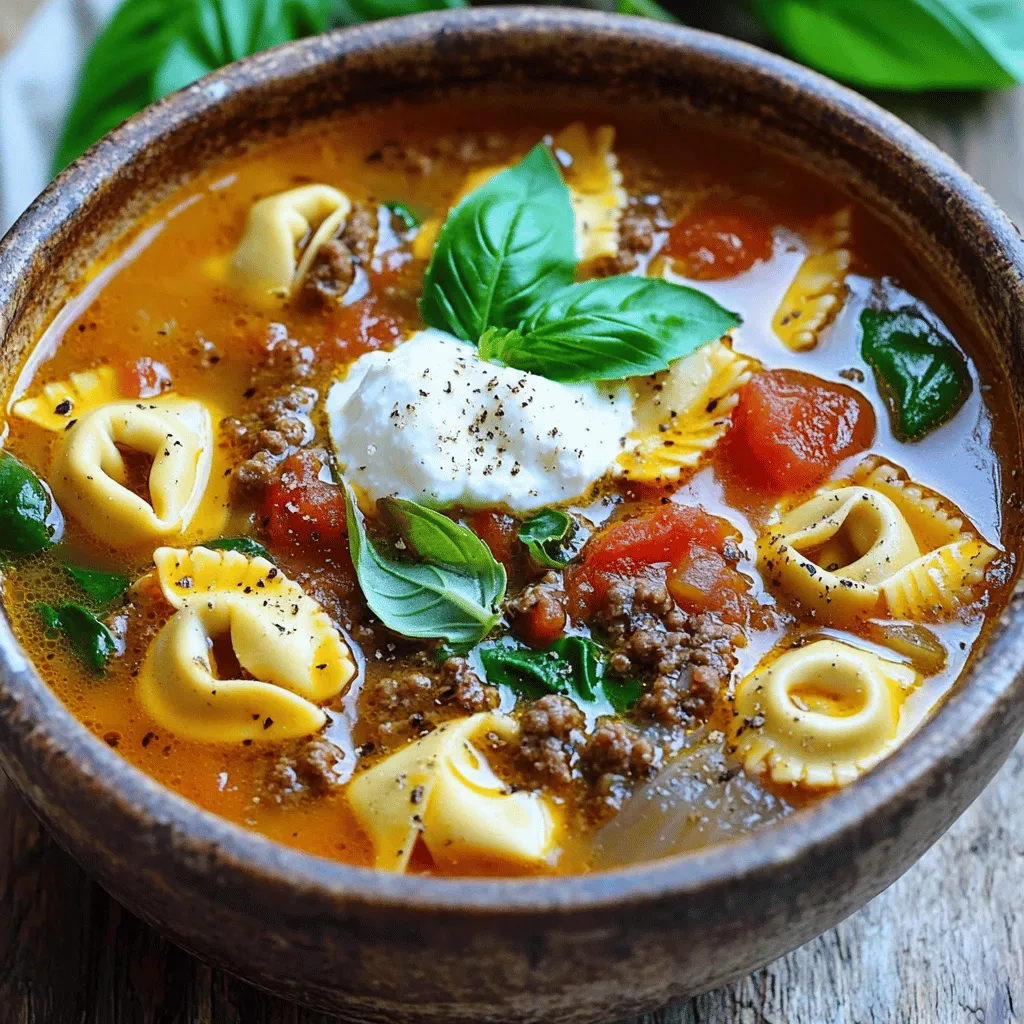Error loading content

Published

Error loading content

A comforting and hearty soup that combines the flavors of lasagna with the ease of a one-pot meal.
In a large pot, heat the olive oil over medium heat. Add the diced onion and sauté until soft, about 5 minutes.
Stir in the minced garlic and cook for another 1-2 minutes until fragrant.
Add the ground beef (or sausage) to the pot and cook until browned, breaking it up as it cooks. Drain any excess fat.
Stir in the crushed tomatoes, chicken broth, Italian seasoning, and red pepper flakes (if using). Bring the mixture to a simmer.
Add the broken lasagna noodles and cook for 10 minutes or until they are al dente.
Stir in the tortellini and cook for an additional 5 minutes until heated through.
Add the fresh spinach and stir until wilted, about 2 minutes.
Season the soup with salt and pepper to taste.
Serve the soup hot, dolloping a spoonful of ricotta cheese on top of each bowl and a sprinkle of shredded mozzarella cheese.
Garnish with fresh basil leaves before serving.
Feel free to substitute ground beef with Italian sausage for a different flavor.